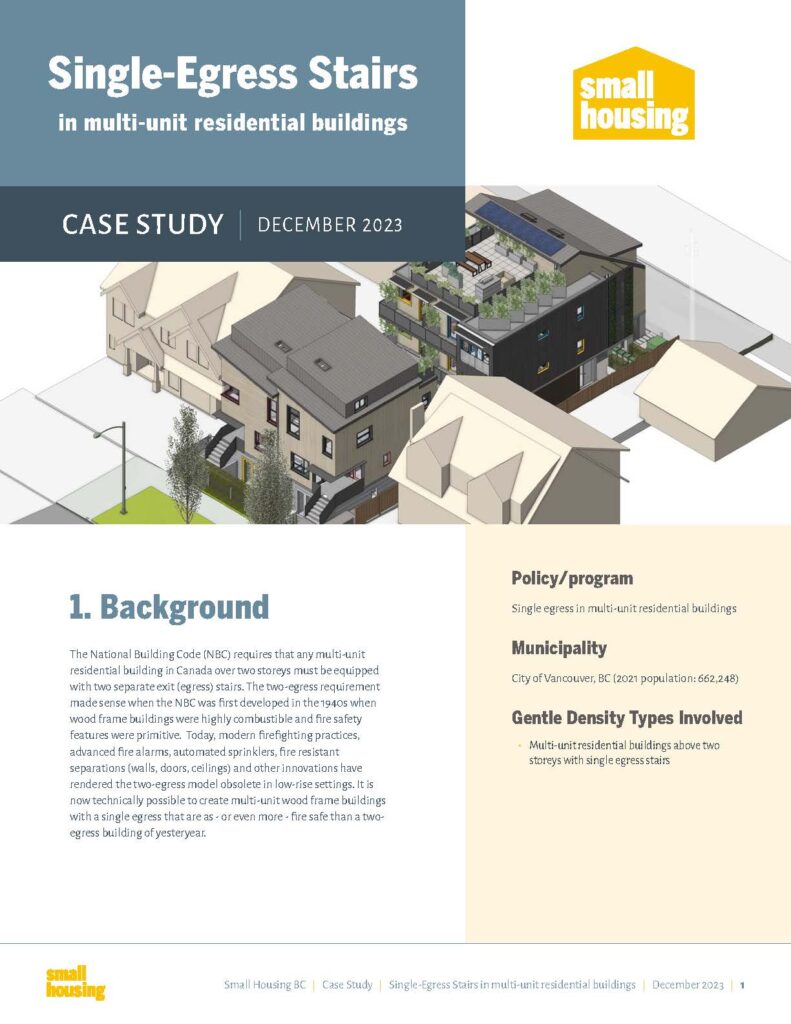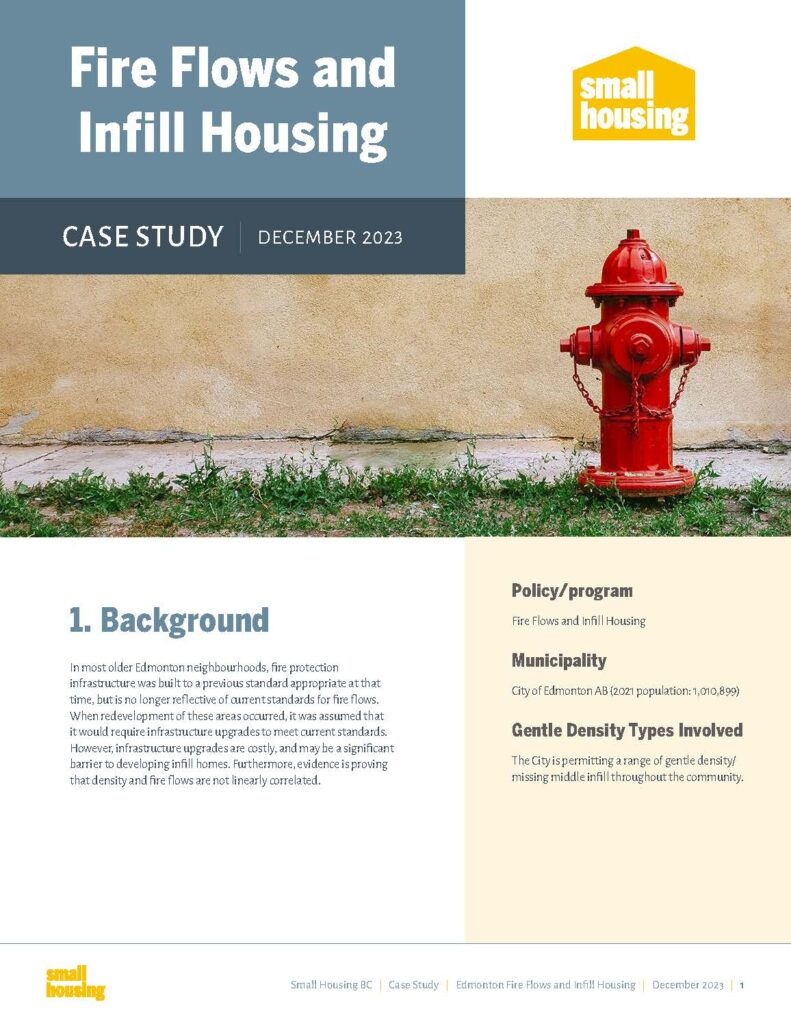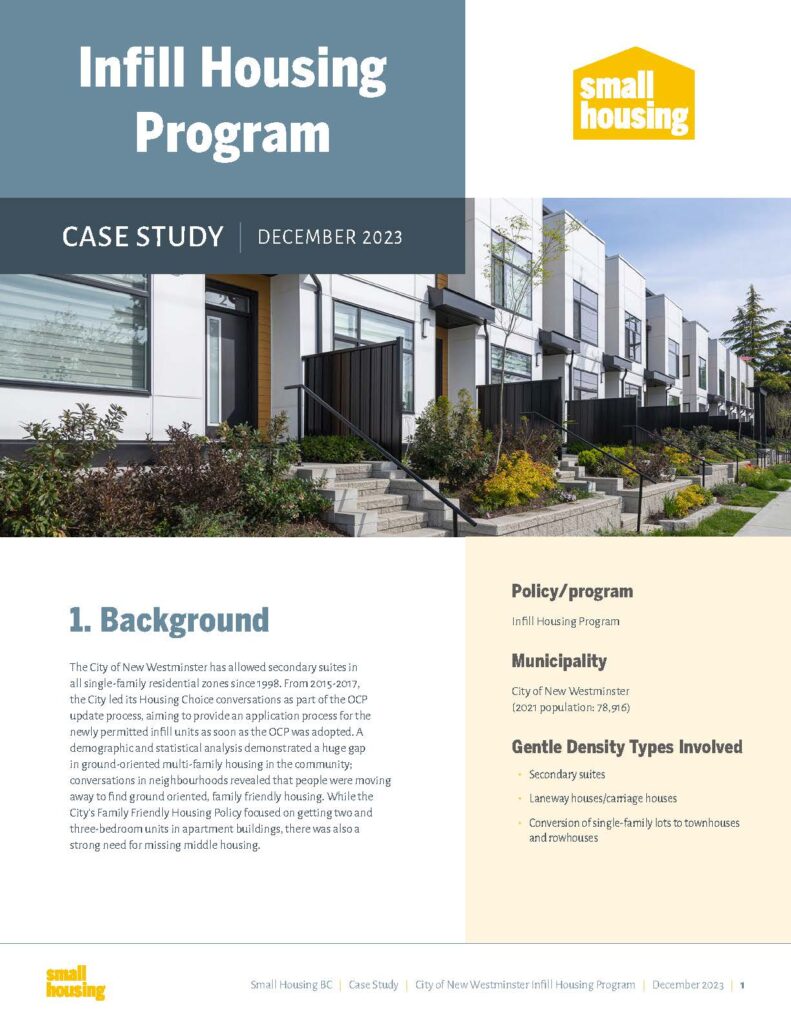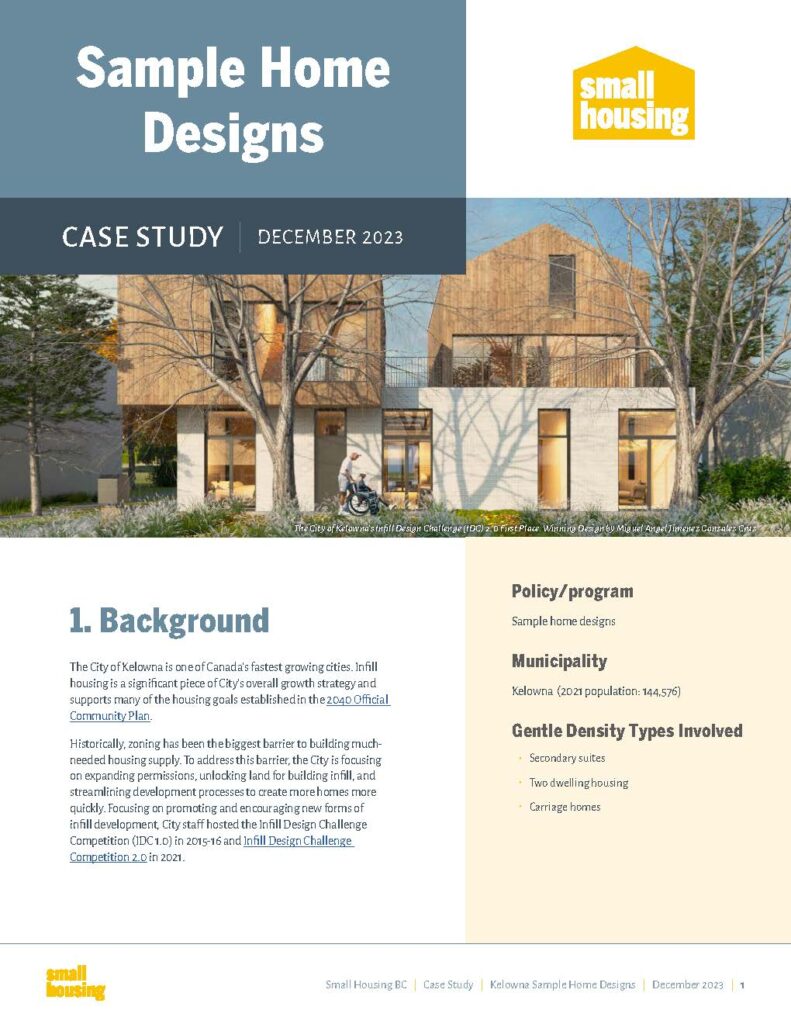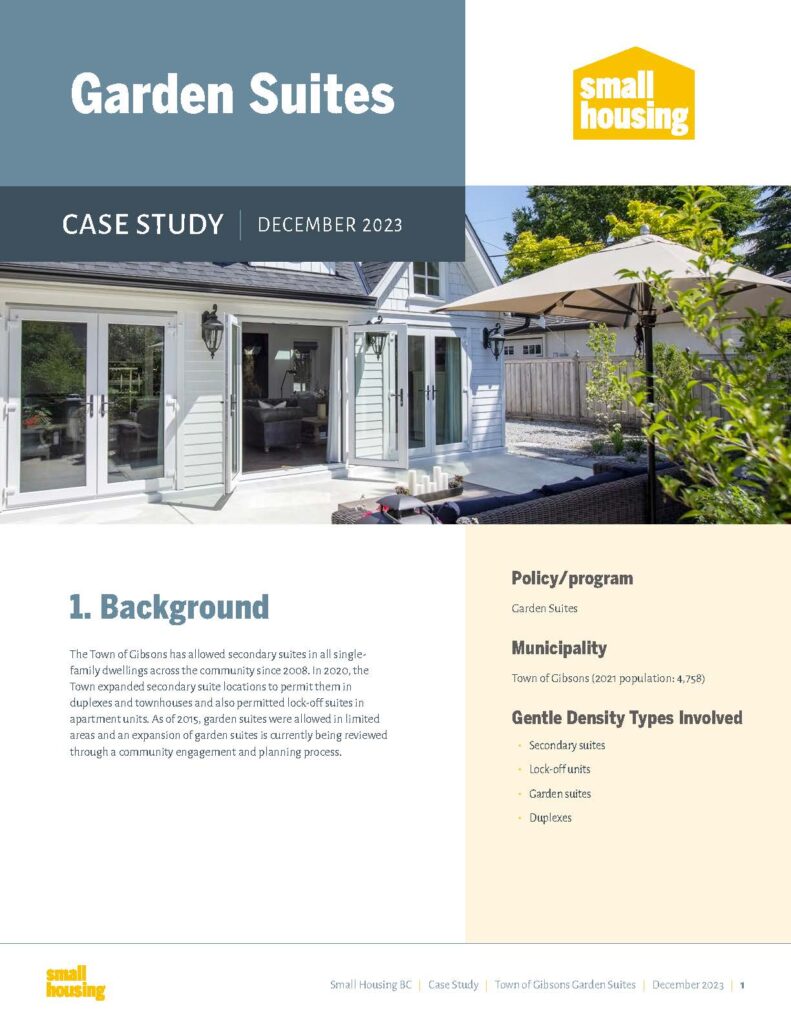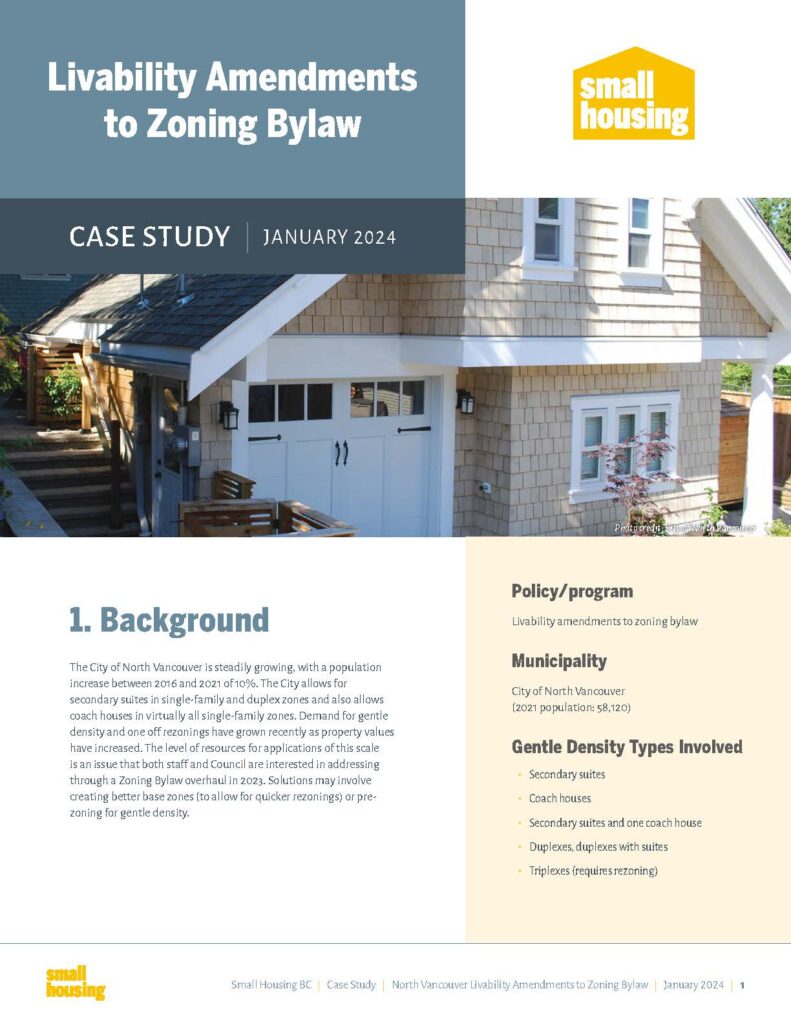
Key insights: Explore a comprehensive overview of details and technical resources to support the implementation of Bill 35 – Short-Term Rental Accommodations Act, Bill 44 – Housing Statutes (Residential Development) Amendment Act and Bill 47 – Housing Statutes (Transit-Oriented Areas) Amendment Act that have been provided to local governments by the Provincial Government of BC Housing.
Resources include:
- Key timelines for local planners
- What to know about the regulations and policy manuals, including details on Small-Scale Multi-Unit Housing Provincial Policy Manual and Site Standards
- Summary slides about the regulations and policy manuals

